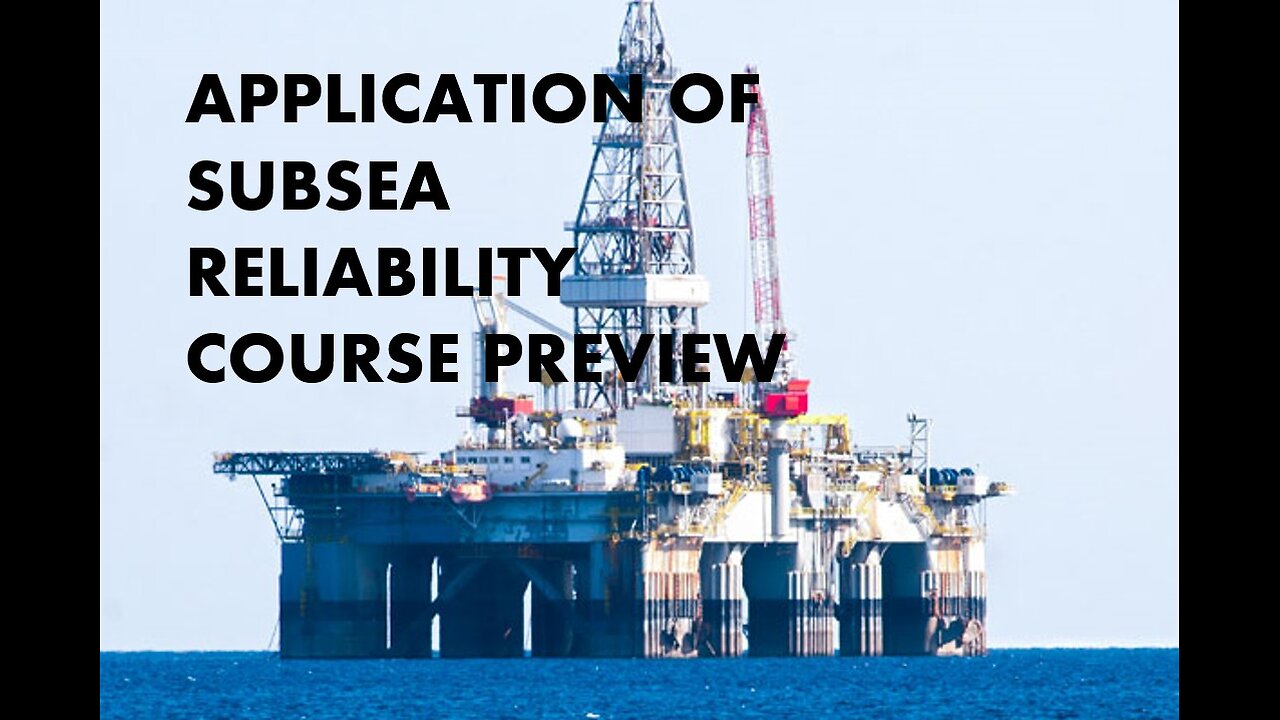Premium Only Content

Applications of Subsea Reliability Course Preview
Due to the high investment costs for deep-water subsea production systems of high-value subsea fields, it is crucial to ensure a high availability to recover the investment. The problem is compounded by the cost of recovery, repair and replacement of failed equipment. Testing and reliability analyses are two pillars of reliability assurance; neither of them on their own assures the delivery of a reliable system. Possibly with more imaginative use of reliability methods, it is possible to optimize testing. It is suggested to use reliability analysis as a guide for allocating resources for testing. This framework allows a better understanding of verification settings and strategies to handle constraints (e.g. costs, expandability, repair-ability, maintainability, intervention procedures, downtime, automation etc.) and performance measures, to achieve highly reliable production systems. The proposed procedure also assists risk management efforts by feeding the results of reliability analyses, testing and project risk analysis into validation processes, the systems engineering measurement process ensures enhanced reliability. We define reliability assurance as a part of the systems engineering processes to ensure the continued function and resilience of the production system from the downhole valve to the subsea equipment, housed on the topside or at an onshore terminal, in their operating environment and condition using the "Fit-For-Service" notion.
For full videos you can visit this link :
https://drive.google.com/file/d/1tRDCsCd7arWqODWKxeDnVP1xnhcBj3iv/view?usp=sharing
and you will be directed to a google drive link where you can download all files of this course
https://drive.google.com/file/d/1ORgC8OlP9mZnFiPQhRTZuaV-ZbcrUWYE/view?usp=drive_link
-
 LIVE
LIVE
LFA TV
23 hours agoGermany’s Conquest of Europe | TRUMPET DAILY 2.28.25 7PM
236 watching -
 LIVE
LIVE
2 MIKES LIVE
3 hours ago2 MIKES LIVE #186 Oval Office Fireworks!
149 watching -
 15:36
15:36
Tactical Advisor
7 hours agoMUST HAVE AR15 Upgrades for Under $100
86.3K4 -
 28:11
28:11
Rethinking the Dollar
8 hours agoTrump(verse): Trump Family Going All In On Crypto
10.5K2 -
 21:49
21:49
Mrgunsngear
4 hours ago $0.74 earnedBarrett M107A1 .50 Cal Semi-Automatic Rifle Review
23.7K2 -
 1:14:18
1:14:18
Tucker Carlson
8 hours agoDr. Richard Bosshardt Reveals Deadly Truth: Most Surgeons Aren’t Fit to Practice. Here’s Why.
160K93 -
 3:48:32
3:48:32
Right Side Broadcasting Network
10 hours agoLIVE REPLAY: Pres. Trump and Ukrainian President Zelenskyy Meet and Hold a Press Briefing - 2/28/25
258K186 -
 2:59:13
2:59:13
The Charlie Kirk Show
7 hours agoTrump vs. Zelensky Reaction + The Epstein Misfire + Charlie vs. Newsom | Schimel, Marlow, Baller | 2.28
212K76 -
 55:05
55:05
The Dan Bongino Show
10 hours agoAmerica Is Back In The World Stage, And We Love To See It (Ep. 2433) - 02/28/2025
912K1.98K -
 49:29
49:29
The Rubin Report
9 hours agoDetails About Joy Reid’s Weeping Farewell No One Noticed with Co-Host Megyn Kelly
120K144